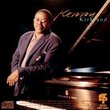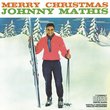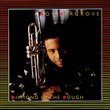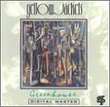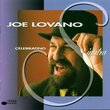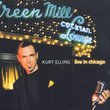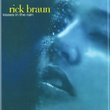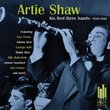| All Artists: The Herbie Nichols Project, Frank Kimbrough Title: Strange City Members Wishing: 2 Total Copies: 0 Label: Palmetto Records Original Release Date: 1/1/2001 Re-Release Date: 10/2/2001 Genres: Jazz, Special Interest, Pop Styles: Avant Garde & Free Jazz, Modern Postbebop, Bebop Number of Discs: 1 SwapaCD Credits: 1 UPC: 753957207724 |
Search - The Herbie Nichols Project, Frank Kimbrough :: Strange City
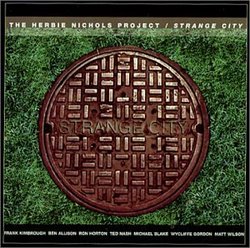 | The Herbie Nichols Project, Frank Kimbrough Strange City Genres: Jazz, Special Interest, Pop
Repertory jazz can be a bad thing, rife with second-rate musicians cashing in on the reputation of one of the greats. The Herbie Nichols Project, however, is different. A notable and talented septet led by bassist Ben Alli... more » |
Larger Image |
CD DetailsSynopsis
Amazon.com Repertory jazz can be a bad thing, rife with second-rate musicians cashing in on the reputation of one of the greats. The Herbie Nichols Project, however, is different. A notable and talented septet led by bassist Ben Allison, pianist Frank Kimbrough, and trumpeter Ron Horton, the group dedicates itself to the tragically overlooked pianist and composer Herbie Nichols, who died in 1963 of complications from leukemia. Only 44 when he died, Nichols recorded three albums for Blue Note and one for Bethlehem; however, Strange City, the Nichols Project's third album, features 10 unrecorded Nichols compositions. The group maintains the composer's angular bop style while freshening it up with the players' own unique perspectives as talented modern-day improvisers. The four horns in particular are a nice touch, fleshing out Nichols's written melodies with complex harmonic arrangements that Nichols's regular trio would never be able to do. Truly a labor of love, Strange City is the heady sound of good intentions well fulfilled. --Tad Hendrickson Similarly Requested CDs
|
CD ReviewsMagnificent music from the Bartok of jazz madamemusico | Cincinnati, Ohio USA | 11/21/2003 (5 out of 5 stars) "The late critic Ralph Berton used to refer to Thelonious Monk as "the Stravinsky of jazz" because of his masterful displacement of rhythms, and his ability to build an entire piece on a few rhythmic cells. Had he been more familiar with this music of Herbie Nichols which has since come to light, I'm sure he would have called him the Bartok of jazz.Like Bartok, Nichols used simple folk rhythms (blues and Southern swing) as an underlying structure for wild and colorful harmonic-melodic fantasies. Though his own piano trio recordings for Blue Note only give a hint as to his real intentions (which was to score the music for a small band playing interwoven and disparate lines, as they do here), you can still hear his creativity in creating lines that developed not in a linear progression but, rather, sideways: of coming at the listener from a few different perspectives at the same time, thus building a complex structure out of rather simple motivic cells. Unlike Bartok, however, Nichols' music had humor as well. His only real predecessors in this type of framework were some of the small-group recordings made in the 1920s by Red Nichols (no relation, of course) and in the 1930s by Red Norvo.Like all truly creative music, however, Nichols' ouvre does not appeal to the average jazz listener. The surrealistic, overlapping lines and occasional lack of a "steady rhythm" bring it more in line with the most creative work of Mingus, Dolphy, Coleman and David Murray. Its appeal is more that of a mosaic than that of a completed picture: the listener is challenged to fill in the connecting lines via his or her imagination and familiarity with both jazz and classical forms.This is not to say that this music is foreboding, only that it is not "easy listening." In point of fact, the first album of arranged Nichols music was "Blue Chopsticks" by bassist Buell Neidlinger, who knew and worked with Herbie. In that album, Neidlinger used a drummerless quintet, purposely to give more "space" to the playful rhythms and emphasize the interwoven lines. The Herbie Nichols Project uses a drummer, but he does not play a steady rhythm; rather, he fills and punctuates as needed, thus reinforcing the inherent "spaciness" of this music. The effect is simply stunning.If your jazz listening includes the composer-performers mentioned above, as well as the Brubeck Quartet in their "Time Out" period and some of the more adventurous music of Chick Corea, this album is for you. Herbie Nichols was not merely ahead of his time; he was a displacement of time." Recovered work of a master N. Dorward | Toronto, ON Canada | 01/09/2002 (4 out of 5 stars) "This is the 3rd Herbie Nichols Project album; the 7-piece collective is co-led by the pianist Frank Kimbrough & the bassist Ben Allison (& the trumpeter Ron Horton, who is the most prominent horn on this disc, is also a key member). The other players are Wycliffe Gordon on trombone (otherwise best known for his role in Wynton Marsalis's bands); Ted Nash & Michael Blake on saxophone; & Matt Wilson on drums. The repertoire on this disc is 10 Nichols tunes, of which 9 were never commercially recorded by Nichols. The album nicely demonstrates the individuality of Nichols' vision: on the one hand, the blues are very much in evidence here; on the other, an extremely sophisticated structural & harmonic sense that is given fullest rein on bittersweet ballads like "Strange City". Nichols' music is at once genial, wryly comic & bittersweet. -- The performances here are mostly by smaller subsets of the ensemble, each player getting his own feature. Gordon is especially good on his bravura display of freakish trombone on "Blue Shout"; there's also a gorgeous a cappella rendition of the opening "Moments Magical" by all four horn players. The one slight misgiving I have here is about the pianist Frank Kimbrough, who is quite competent but a little nondescript. Mostly his playing hews a line somewhere in the vicinity of Bill Evans & Herbie Hancock; when he dips into a Monk/Nichols bag on "Karna Kangi" it sounds rather too close to pastiche.A very good disc of modern jazz, which should be enjoyable even by those with no former acquaintance with Nichols' music." Lost jazz treasure found Joanna Daneman | Middletown, DE USA | 03/20/2002 (5 out of 5 stars) "Herbie Nichols had, by all accounts, a tragic life. Not only was he overlooked and misunderstood, he was reduced to playing gigs in the most modest of venues. He died at 44 from leukemia, as if being misunderstood, underutilized and ahead of his time wasn't enough. As Bleeding Gums Murphy of the Simpsons says "I had enough pain in my life."Thank heavens that jazz artists like the septet Herbie Nichols Project have seen fit to re-record Nichols' marvelous jazz. Listen to "Strange City" and though you will hear definite 50's be-bop, beatnik styling in the composition, it is way beyond be-bop and well into the modern jazz of today. If you love jazz, you will love this CD."
|

 Track Listings (10) - Disc #1
Track Listings (10) - Disc #1
